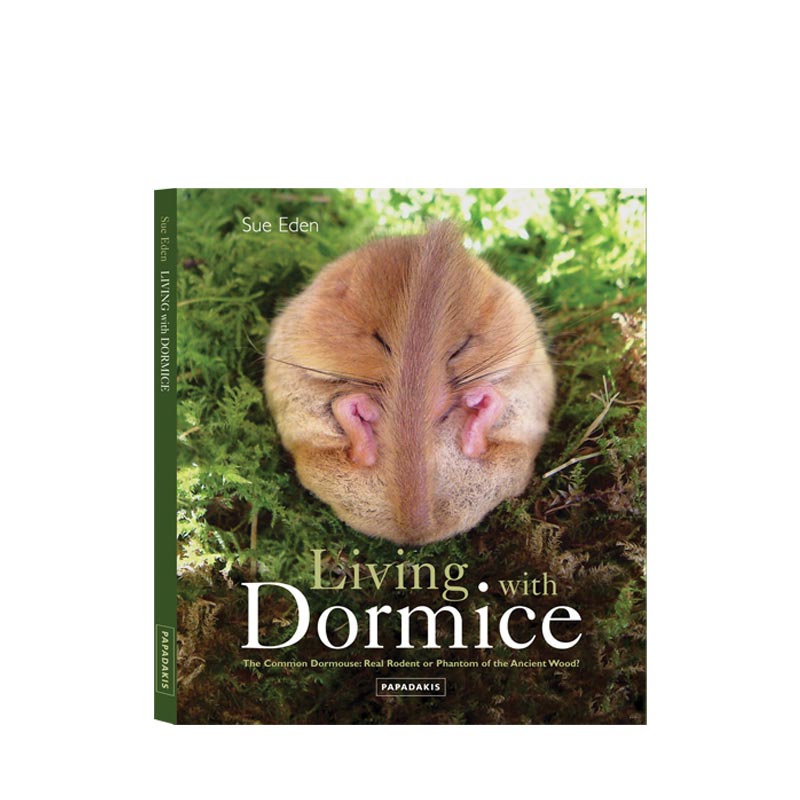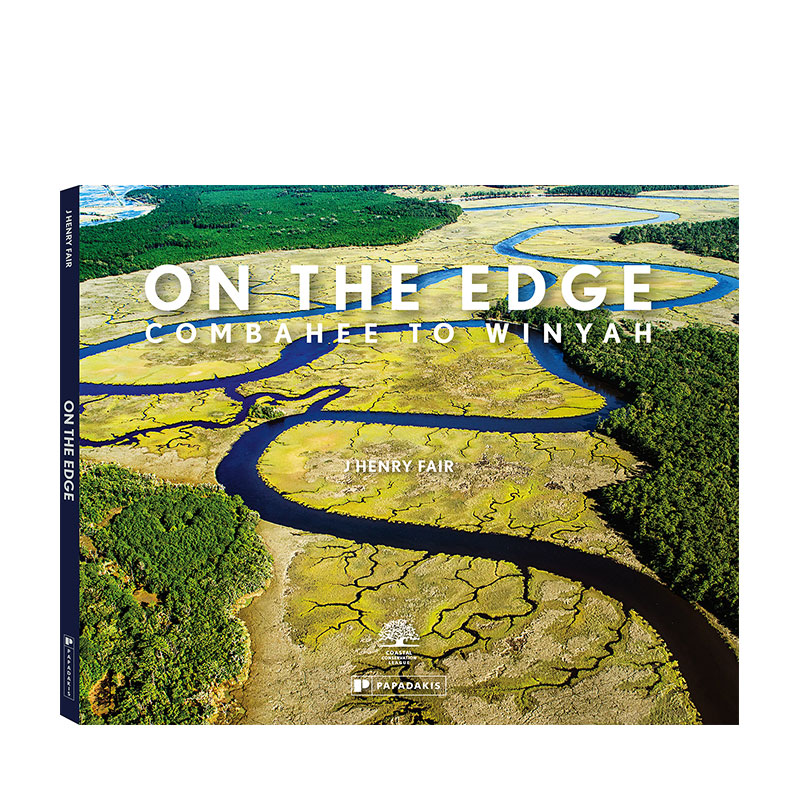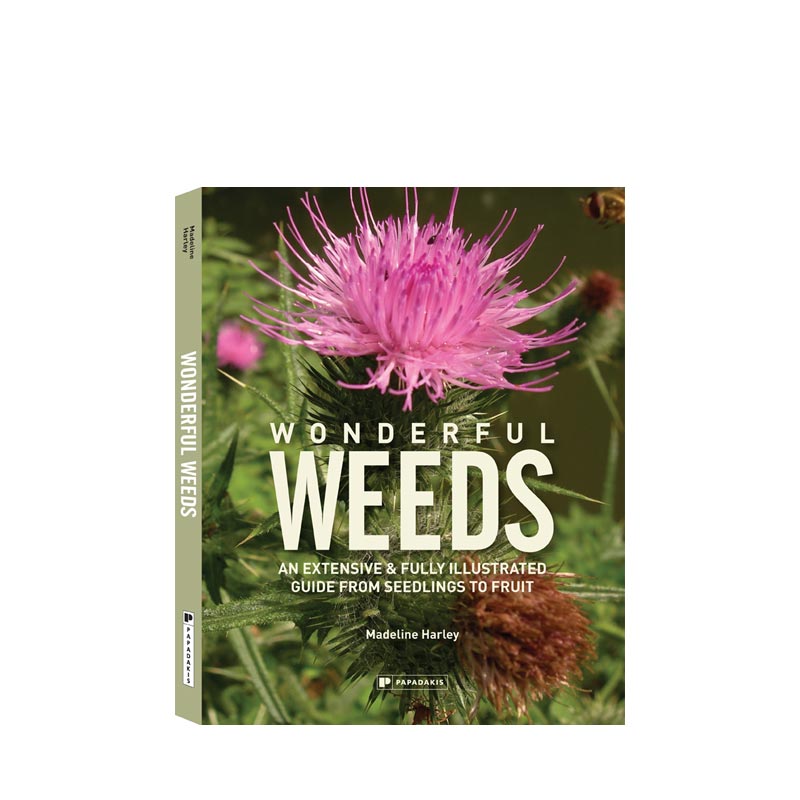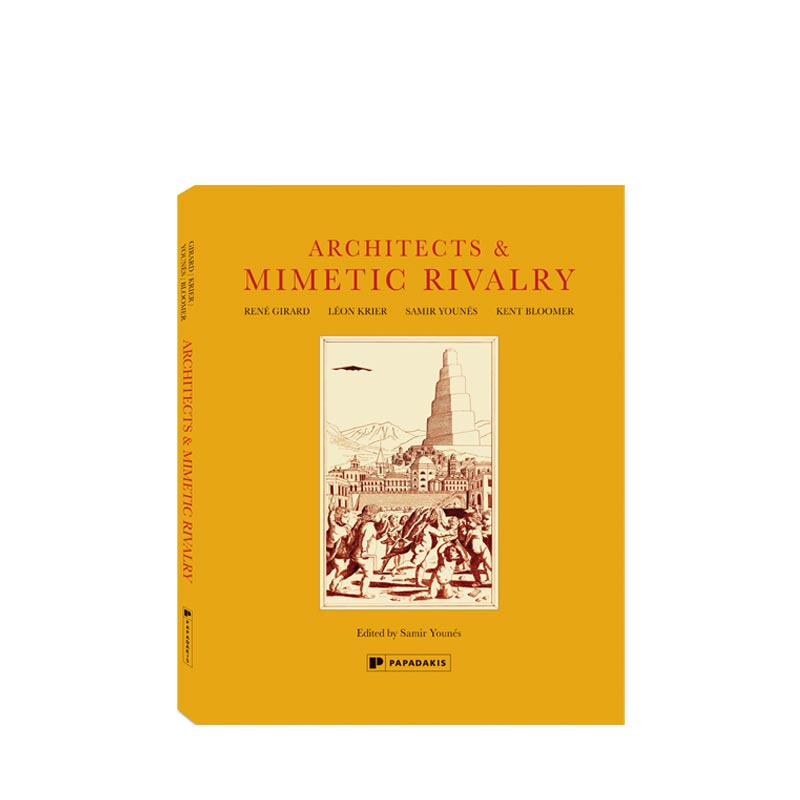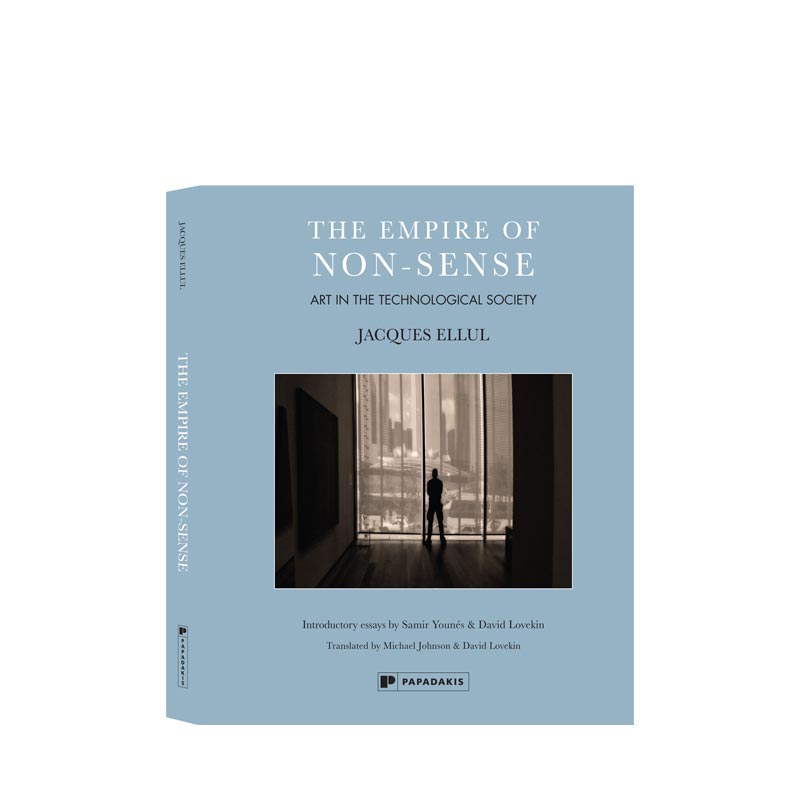Our Authors
Papadakis are proud to work with leading authors from the fields of science, nature, architecture, design and photography. We believe in a collaborative approach and work closely with our authors while developing and creating each book. We are also aware of the importance of promoting authors with their books. We believe that this is why we maintain such strong links with our authors and why they choose to remain with Papadakis to publish their successive works.
Papadakis are always looking for exciting and highly original projects. If you are a prospective author, please contact us.

Chris Beardshaw
Chris Beardshaw is one of the leading lights in the world of gardening. On screen and on air, Chris is loved by millions for his ability to communicate and share his rich vein of knowledge with warmth and enthusiasm. Off screen he is equally admired for his huge variety of work in design and education, where he is recognised as a real ambassador for the industry. Chris heads up a private design practice and has undertaken commissions for a number of high profile projects for clients such as English Heritage, The RSPB, RNLI and Jodrell Bank Discovery Centre. He is a regular columnist for The English Garden and Garden News, and is the author of three books. Chris’s broadcasting experience spans 14 years – notable programmes include: Apples: British to the Core (BBC4), Wild About Your Garden (BBC1), The Flying Gardener (BBC2), Gardeners’ World (BBC2), Hidden Gardens (BBC2), and many more. He is also a long–standing, regular panellist on BBC Radio 4’s popular Gardeners’ Question Time.

Alex Bernasconi
Alex Bernasconi is an award-winning nature, wildlife and landscape photographer. Born in 1968 in Milan, he has carved out a multi-faceted career as outdoorsman, sportsman, adventurer and traveller, his camera always with him to take up-close photographs of wildlife and its environment. His iconic images have appeared in magazines and books worldwide and he has won many prizes at prestigious international awards including the International Photography Awards (IPA), the Trierenberg Super Circuit, the PX3 (Paris), the WPO Sony World Photography Awards, Graphis, and the Epson International Pano Awards. Wild Africa, his first photography book, was awarded the Gold Medal at the Independent Publisher Awards in New York in 2011.

Stephen Blackmore
Stephen Blackmore studied botany at the University of Reading where he became interested in the organisation of plants at the microscopic level and, for his PhD completed in 1976, studied pollen grains using the then recently available scanning electron microscope. He worked on Aldabra Atoll in the Indian Ocean and in Malawi before moving to the Natural History Museum in London in 1980 to continue research into the diversity, function and development of spores and pollen grains, publishing numerous academic papers on the subject. In 1987 he was awarded the Linnean Society’s Trail-Crisp Award for an outstanding contribution to biological microscopy and in 1990 he was appointed Keeper of Botany. From 1999 to 2013 he was Regius Keeper at the Royal Botanic Garden Edinburgh where he championed two causes he is passionate about: plant conservation and engaging the public with science. He was elected a Fellow of the Royal Society of Edinburgh in 2001. He currently Chairs Botanic Gardens Conservation International and the Darwin Expert Committee.

Jean Cazals
Jean Cazals is an award-winning food photographer living in London where he has worked for the past ten years with publishers, advertising and design clients. He lives in Notting Hill with his wife and daughter. His work has appeared in House & Garden, Delicious, Food & Travel, ELLE, Marie Claire, Condé Nast Traveller, Vogue Entertaining, Martha Stewart Living, The Sunday Times, The Telegraph Magazine and Olive. In addition, his work has been published in over 70 cookbooks and he has worked with numerous international chefs including Michel Roux, Peter Gordon, Jamie Oliver, Gordon Ramsey, J.P. Hévin, Raymond Blanc, Ken Hom, Paul Bocuse and Alain Ducasse. He won Pink Lady Food Photographer of the Year 2012 and his book TeaTime won Best UK Dessert Cook Book at the Gourmand Awards in 2013.

Sue & Patrick Cunningham
Sue and Patrick Cunningham, photographer and writer, are partners in life. They are dedicated to showing how the future of the planet can be better than the present, and they are passionate about Brazil's indigenous people, who they value as teachers and friends. In the heart of Brazil lies the Xingu, one of the world's last great wildernesses, which is home to ancient forests and peoples with ancient roots. For 25 years Sue and Patrick made short visits to indigenous communities in areas which are remote from contact with the rest of the country. Winning the Neville Shulman Award from the Royal Geographical Society enabled them to lose themselves in the Xingu for six months. They grew to understand the depth of the cultural disparity which makes indigenous peoples different while recognising the common humanity which they share with all the peoples of the planet. The Original Brazilians they encountered taught them to experience the natural environment as both a spiritual and a physical entity. “Our hosts on the Xingu River were generous with us; they fed us, and they nourished our souls. They asked us to tell their story, to show the world that they are one with the forests, the rivers, the rocks, the trees and the sky, but to make people understand that they, too, are men and women, human beings, with hopes, aspirations and dreams for the future of their children and grandchildren.” A passion to explore does not always mean going to new places or even discovering new paths. In its essence, to explore is to see the Earth with new eyes and to hear its voices with new ears.

Julian Dowdeswell
Scott Polar Research Institute
Julian Dowdeswell has been Professor of Physical Geography and Director of the Scott Polar Research Institute in the University of Cambridge since 2002. He is also Brian Buckley Fellow in Polar Science at Jesus College, Cambridge. Julian graduated from the University of Cambridge with first class honours and studied for a Masters Degree at the Institute of Arctic and Alpine Research in the University of Colorado before returning to Cambridge for his Ph.D. He has also taught in Aberystwyth and Bristol universities, also establishing the Centre for Glaciology in Aberystwyth and the Bristol Glaciology Centre’. He was awarded a Doctor of Science degree by the University of Cambridge in 2016. Julian has research interests in glaciology and glacial geology, studying the form and flow of glaciers and ice caps and their response to climate change, and the links between past ice sheets and the marine-geological record, using a variety of satellite, airborne and shipborne geophysical instruments. He has worked in many parts of the Antarctic and Arctic, and in mountain areas of the world, in a series of field research projects over almost 40 years. He has written over 350 scientific papers and eleven books, including several for general audiences. He has also lectured to wider audiences, from school children to business leaders and parliamentarians, on climate-change issues. Julian has also represented the UK on a number of international committees concerned with science strategy and policy in the polar regions. These include terms as UK National Delegate to both the International Arctic Science Committee (IASC) and the Scientific Committee on Antarctic Research (SCAR), and as Chair of the UK National Antarctic Research Committee. Julian has been awarded the Polar Medal by Her Majesty the Queen and has also received the Founder’s Gold Medal from the Royal Geographical Society. In 2011 he was awarded the Louis Agassiz Medal by the European Geosciences Union. He received the IASC Medal of the International Arctic Science Committee in 2014 and the Lyell Medal of the Geological Society of London in 2018. He was recently elected a Fellow of the Learned Society of Wales and is an Honorary Fellow of Aberystwyth University.

Richard Economakis
Richard Economakis combines practice and teaching in architecture. He is Associate Professor of Architecture at the University of Notre Dame and currently serves as Director of Architecture and Urbanism in the School of Architecture’s Graduate Program. He joined the School in 1996 after years of working with prominent firms in London and New York. He is both a Greek and US citizen and received his undergraduate and graduate degrees from Cornell University. While in London he worked as an editor at Academy Editions. He is the author of books on the architecture of the Acropolis in Athens, and the towns and buildings of Nisyros, an island in the Aegean Sea. His most recent edited work is the book Durability in Construction, which showcases new buildings that employ traditional techniques, with essays by their authors. The publication was selected as the July 2015 ‘Book of the Month’ by the Royal Institute of British Architects. His design for a Civic Hall at Cayalá received a prestigious 2013 Palladio Award. In 2015 his work in the same town in collaboration with Leon Krier and Estudio Urbano was honored with an Acanthus Award from the Institute of Classical Architecture and Art’s Chicago Midwest Chapter, and an urbanism award from the International Making Cities Livable organization.

Sue Eden
Sue Eden studied botany and then gained a PhD in plant taxonomy. She joined the Institute of Terrestrial Ecology, where she studied marine algae and uncovered their role in mud accretion on salt marshes. After marriage to a veterinary surgeon she was side-tracked by finding dormice in their Dorset garden. She wanted to know what supposedly rare animals were doing far from any habitat that the literature said they required.

J Henry Fair
J Henry Fair is an American photographer and environmental activist, based in New York. With his images, Fair has called attention to environmental and political problems in different regions of the world. He is best known for his “Industrial Scars” series, abstract-expressionist photographs of detritus and externalities, which has been been exhibited around the world at major museums, galleries, and educational institutions. His work has been featured on The TODAY Show, CNN, NPR’s Marketplace, and WDR German TV, as well as in most major publications, including The New York Times, National Geographic, Vanity Fair, Rolling Stone, New York Magazine, Die Zeit, Le Figaro, Harper’s, Smithsonian, and Scientific American.
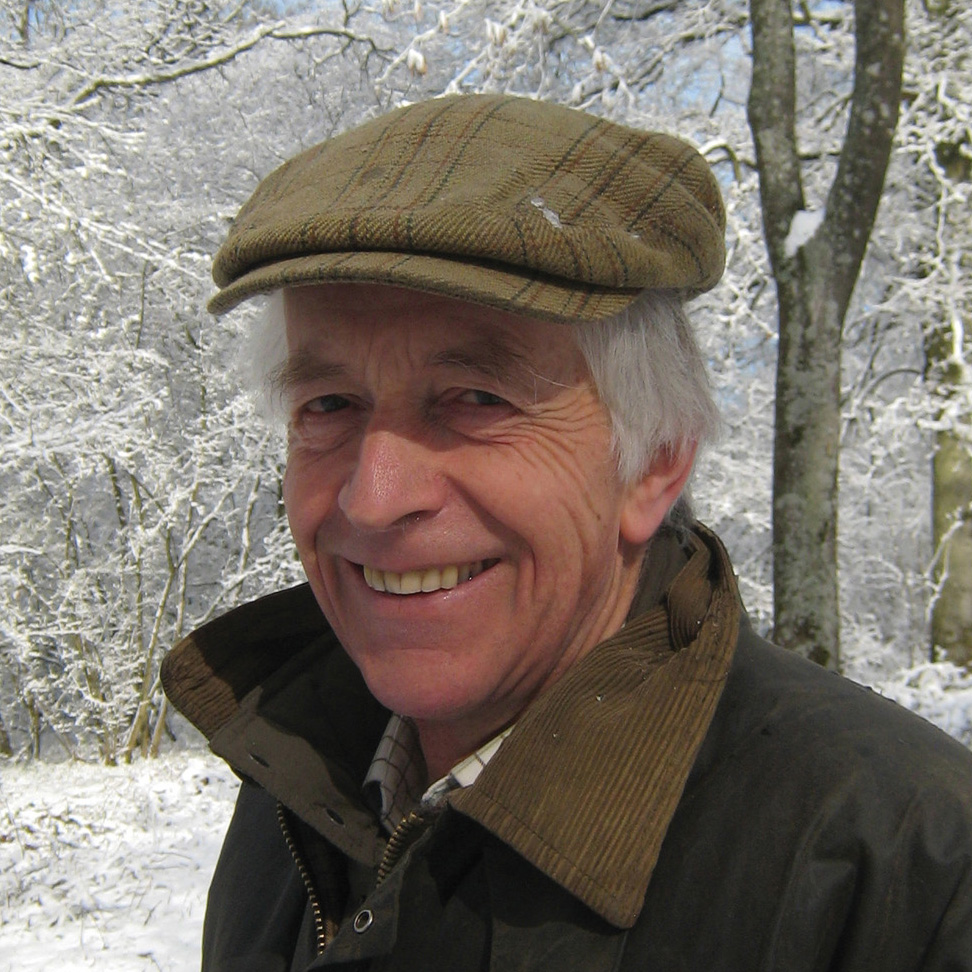
Charles Flower
www.charlesflower-wildflowers.co.uk
Charles Flower is a consultant working with individuals, farmers and landowners as well as parishes and other groups to safeguard wild flowers and increase plant and animal diversity. He is developing improved methods of wild flower restoration, owns the Flower Farms seed business, holds workshops and manages his own 25 acre hazel copse. His first book Where Have all the Flowers Gone? Restoring Wild Flowers to the Countryside was published to great acclaim in 2008.

Peter Forbes
Peter Forbes is a science writer with a special interest in the relationship between art and science. He has written numerous articles and reviews, many specialising in the relation between the arts and science, for the Guardian, Independent, The Times, Financial Times, Nature, Scientific American, New Scientist, World Medicine, Modern Painters, New Statesman, and other magazines. He was editor of the Poetry Society’s Poetry Review from 1986-2002 and edited Scanning the Century: The Penguin Book of the Twentieth Century in Poetry (Viking, 1999). The Gecko’s Foot, a book on the new science of bio-inspired materials, was published by Fourth Estate in 2005 and was long-listed for the Royal Society Prize. Dazzled and Deceived: Mimicry and camouflage (Yale University Press, 2009) won the 2011 Warwick Prize for Writing. He teaches the Narrative Non-fiction short course at City University, London, and is RLF Writing Fellow at Great Ormond Street Hospital.

Axel Gomille
Axel Gomille is a biologist from Germany with a passion for Indian wildlife. He studied zoology in Frankfurt and in Lakeland, Florida, and works for the German public television broadcaster ZDF as a journalist and filmmaker, specialising in topics on wildlife and conservation. He sets out on the trail of wild animals whenever possible, and has been travelling to India on a regular basis for the past 25 years. Working as a biologist in the tiger reserves of Kanha and Bandhavgarh was a defining experience for him, giving him the opportunity to learn more about the ecology and behaviour of Indian wildlife. Gomille’s work as an author and photographer has taken him to some of the most beautiful reserves around the world. A key question on his mind is how people and wildlife will continue to coexist in the 21st century. Gomille’s photographs and TV documentaries have received multiple awards. He shot the first photo story on wild sloth bears, which was published in magazines worldwide, including BBC Wildlife, GEO International and Asian Geographic, while his documentary The Tiger Experiment portrayed conservation efforts for tigers in India. Wild India is his sixth book.

Paul Greenhalgh
Paul Greenhalgh is Director of the Sainsbury Centre for the Visual Arts at the University of East Anglia. His former roles include Director and President of the Corcoran Gallery of Art in Washington DC, President of NSCAD University in Canada, and Head of Research at the V&A Museum in London. His books include Ephemeral Vistas (1989), Modernism in Design (1993), Art Nouveau 1890-1914 (2000), The Persistence of Craft (2003), and The Modern Ideal (2005).

Tom Grimsey
www.giantsoftheinfinitesimal.co.uk
As a career sculptor, Tom Grimsey exhibited nationally and internationally for 30 years. In 2007 he was awarded an FRSF grant to continue work with ‘Malleable Sculptures’, creating new unstable objects in flux, working with ferrofluids and gels, transformed under the influence of controlled magnetic fields. As a result of this work, he became part of a multidisciplinary team of leading nanoscientists working on a ‘Directed Reconfigurable Nanomachine’ with funding from the Engineering and Physical Sciences Research Council (EPSRC). A follow-up grant in partnership with Theo Kaccoufa led to the touring show Giants of the Infinitesimal, which exhibited at the Museum of Science and Industry, Manchester (MOSI) 2011-12 and at the Magna Science Adventure Centre, Sheffield 2012-13. As well as his research into new fluid languages for sculpture, Grimsey had a substantial practice working with architects and planners integrating larger art works into the fabric of new developments in urban regeneration. He was a Henry Moore Sculpture Fellow from 1990-92 and taught at Brighton University from 2003 (from 2008 as Head of Sculpture). Tom Grimsey died in October 2014, six months after the UK publication of Nanoscience: Giants of the Infinitesimal.

Michael Hambrey
Michael Hambrey is a graduate of the University of Manchester, with a BSc degree in Geography and Geology, and a PhD in Glaciology. He has held research positions at the Swiss Federal Institute of Technology (ETH) in Zürich, and at the University of Cambridge where he became a Fellow of St Edmund’s College. He then moved to Liverpool John Moores University as Professor of Quaternary Geology, where he led the development of Earth Science and Physical Geography degree programmes. Lastly, he became Professor of Glaciology at Aberystwyth University and successively Director of the Centre for Glaciology and the Climate Change Consortium of Wales. He has also held Visiting Fellowships at the of Victoria University of Wellington, the University of Otago and a Visiting Professorship at the University of British Columbia. Michael’s research interests have focused on the dynamics of glaciers (especially their structural attributes), glacial sedimentary processes, and interpretation of the past glacial geological record. This research has taken him to both polar regions, where he has had 12 field seasons in the Antarctic and 25 in the Arctic, as well as to major mountain ranges such as the Andes, the Himalaya, the Alps, New Zealand Alps, Alaska and Yukon. His research has yielded nearly 200 scientific papers, several edited books and a variety of books on glaciers and the Arctic for the wider public. Michael retired from full-time teaching at Aberystwyth University in 2015, but continues to be active in research, writing, lecturing, guiding and running field excursions for the wider public. Specifically, for two or three months a year he serves as a lecturer and guide with Quark Expeditions, embracing expedition voyages to both the Arctic and Antarctic. Michael has been awarded the Polar Medal by Her Majesty the Queen on two occasions, in 1989 and 2012. He is also a recipient of the SCAR (Scientific Committee on Antarctic Research) Medal for Excellence in Antarctic Research (2018), and has had Hambrey Cliffs named after him on James Ross Island, northeastern Antarctic Peninsula. He was elected a Fellow of the Learned Society of Wales and an Honorary Member of the Quaternary Research Association in 2017.

Madeline Harley
Botanist Madeline Harley was, until her retirement in 2005, Head of the Pollen Research Unit at the Royal Botanic Gardens, Kew. Her research work, which is internationally recognised, is concerned mainly with the study of species-specific pollen characteristics in the field of flowering plant evolution and relationships. She has authored or co-authored more than 80 professional articles and books. She has presented her work at numerous international conferences. Dr Harley is a Fellow of the Linnean Society and holds an Honorary Research Fellowship for her work at the Royal Botanic Gardens, Kew.

Philip Howse
Philip Howse has published books and research articles on insect behaviour and ecology. He has developed environ-mentally-friendly methods for the control of insect pests, recognised by a number of awards including the OBE. After a career spent mainly at Southampton University, he has now retired but continues writing about the insects that have fascinated him since childhood.

Kym and Tonya Illman
Kym and Tonya Illman are passionate and innovative wildlife photographers. They own an audio production business in Perth, Western Australia, but their love of Africa’s landscapes and wildlife has led them to spend around three months a year photographing in Africa using a range of photographic aids and techniques including quadcopters, remote-controlled camera buggies, and buried or hidden cameras. Their unconventional approach has yielded fascinating angles, spectacular images and some wonderful stories. You can follow their ongoing trips and adventures on their dedicated Facebook page, where they regularly upload new photographs.

Rob Kesseler
Visual artist Rob Kesseler is University of the Arts London Chair in Arts, Design & Science. His long career has often used plants as a source of inspiration. In 2001 he was appointed NESTA Fellow at Kew. Since then he has worked with microscopic plant material. He was 2010 Year of Bio-Diversity Fellow at the Gulbenkian Science Institute, Portugal. His work has been shown in museums and galleries in the UK, Europe and North America, including solo exhibitions at The Victoria & Albert Museum, Kew Gardens and the Calouste Gulbenkian Foundation, Lisbon. He is a fellow of the Linnean Society and Royal Society of Arts.

Quintin Lake
Quintin Lake is recognised as one of the top creative architectural photographers at work today. Before embarking on a career as an architectural photographer Quintin graduated from the world renowned Architectural Association in London where he held a scholarship and worked at Grimshaw Architects on the Eden project. Quintin is a member of The Association of Independent Architectural Photographers, a fellow of the Royal Geographical Society and the Royal Society of Arts.

David Ligare
Growing up in Southern California, David Ligare (born 1945) developed a vision of light informed by his proximity to the Pacific Ocean. After attending the Art Center College of Design in Los Angeles, he moved north, living for several years in Big Sur and Santa Barbara. He began to fully embrace Classicism in the late 1970s and, at the same time, relocated permanently to Monterey County, California, where he continues his quest to create evocatively beautiful, classically inspired paintings that transcend time and place.

Claudia Marcelloni
Claudia Marcelloni was born and raised in São Paulo, Brazil and has lived in Australia, Singapore and the USA. She joined the ATLAS collaboration at CERN (the European Organization for Nuclear Research and the world’s largest physics laboratory) in 2006, when she was commissioned to produce a Photo Book about the completion of the ATLAS detector. Today she is the Head of TEDxCERN. As a non-scientist, she was drawn to work at CERN by her passion for the creative communication of great ideas.

Margaret Pilkington
Margaret Pilkington has a Ph.D. from the University of Reading and taught part-time at Otago University and the Open University before becoming a full-time lecturer in continuing education at the University of Sussex. Her interest in meadows grew out of using the local countryside as a laboratory for teaching science and gained particular impetus with the publication of the National Vegetation Classification system in the 1990s. She particularly enjoys working in an interdisciplinary context combining oral history and historical land-use research with ecological survey to understand more about our natural heritage. She became Emeritus in 2006 and leads the University of Sussex River Ouse Project.

Anton Radevsky
Anton Radevsky is a pop-up engineer and illustrator and lives in Sofia, Bulgaria. His previous books include The Modern Architecture Pop-Up Book, The Pop-Up Book Of Space Craft and The Wild West Pop-Up Book.

Emma Sanders
Emma has been writing about science for the last 20 years. Author of The Large Hadron Collider Pop-up Book, a pop-up book about the science of CERN's Large Hadron Collider, the project took her fascination with physics to a new dimension. An astronomer by training, Emma helped set up the first National science weeks in the UK and worked in the BBC world service science unit before moving to CERN where she headed up the Laboratory’s exhibition team for 10 years. Today she is responsible for CERN’s Microcosm exhibition.

Lewis Smith
Lewis Smith is a journalist specialising in science and the environment. After graduating from the University of Leicester he worked on various local newspapers and as a freelancer for several national newspapers, including The Times from 1998 until 2009. His main areas of interest are climate change and animal conservation and behaviour. His first book Why the Lion Grew Its Mane was longlisted for the Royal Society Prize for Science Books in 2007.

Matthew Stadlen
Matthew Stadlen is a TV and radio presenter. He presents a twice-weekly LBC show rated number one in London, and boasts a large national audience of 150,000+. Before that he presented, produced and co-devised the hugely successful ‘Five Minutes With’ interview strand as well as 29 half hour ‘On The Road With’ documentaries - both for the BBC, where he was also a programme editor on BBC One’s This Week after starting out on ‘Newsnight’. Matthew made national and international headlines with his articles for The Telegraph and wrote The Matthew Stadlen Interview in the paper. He has written for The Spectator, The Sunday Times and Radio Times, appeared frequently on Sky News and is the co-author of ‘The Politics Companion’, published by Think. Cambridge educated, Matthew was born and raised in Notting Hill where he still lives but he gets out to the country whenever he can to pursue his twin passions of photography and birdwatching.

Wolfgang Stuppy
Wolfgang Stuppy is the Seed Morphologist at Kew’s Millennium Seed Bank based at Wakehurst Place in Sussex. At the heart of this large international project, which collects and stores seeds and fruits from all over the world, Dr. Stuppy has found the ideal environment to feed his passion for research into the astonishing diversity of seeds and fruits. A specialist in a rarely studied field, Dr. Stuppy teaches seed biology to university students and members of the Millennium Seed Bank Partnership within the UK and overseas.


Samir Younés
Samir Younés is a traditional architect, theorist, and educator. His writings focus on architectural theory, aesthetics, and the intersecting areas of the philosophy of history, cultural philosophy and politics. He is Professor of architecture at the University of Notre Dame where he was Director of the Rome Studies. Younés is the author of: The True, the Fictive and the Real, Quatremère de Quincy's Historical Dictionary of Architecture, Papadakis, 1999; The Imperfect City: On Architectural Judgment, Ashgate, 2012, Routledge, 2017. He has edited a number of books, including Ara Pacis Controprogetti / Counterprojects, Alinea, Firenze, 2003; Como, La modernità della tradizione, The Modernity of Tradition, Gangemi, Roma, 2004; Barletta, la disfida urbana, Gangemi, Roma, 2005; Architects and Mimetic Rivalry, Papadakis, 2012; The Empire of Non-sense, Papadakis, 2016; and The Intellectual Life of the Architect, Papadakis, 2018. Younés’ projects and essays on architecture and aesthetics have appeared in Architectural Design, The Journal of the Royal Institute of Philosophy, The Journal of Urban Design, Archi e Colonne International, Quadri e Sculture, American Arts Quarterly.









